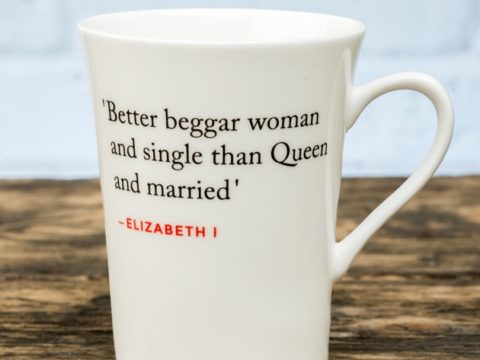Robert Dudley: Life Story
Chapter 5 : A Mysterious Death
Whilst Elizabeth was indulging her personal affections for Robert, there were still many other suitors for her hand, almost any of whom would have been preferable to the sight of the Queen flirting with a married man. The first suitor, her former brother-in-law, Philip of Spain fell by the wayside, having married Elisabeth of Valois as part of the Treaty of Cateau-Cambrèsis, but there was also Eric of Sweden; the Archduke Ferdinand of Austria or his younger brother Charles; the Scottish Earl of Arran’s son, or, amongst the English nobility, the 19th Earl of Arundel, twice-widowed, and considerably older than Elizabeth.
The Imperial ambassador, hearing reports of Elizabeth’s intimacy with Robert, found a way to obtain information from her ladies-in-waiting about whether the Queen had ever slept with her Master of Horse. His spy assured him that the Queen never forgot her honour, yet the ambassador reported home that ‘Her Majesty shows her liking for him more markedly than is consistent with her reputation and dignity.’ Elizabeth maintained throughout her life that all of scandal and gossip which circulated about her and Robert and later other of her favourites was completely unfounded. As she noted, ‘a thousand eyes [saw] all that [she did]’.
But the truth could not stop gossip. Even Elizabeth’s chief lady, Katherine Ashley who had once been her governess, remonstrated with her mistress about her public display of affection for Robert. Elizabeth replied that ‘in this world she had had so much sorrow and tribulations and so little joy… If she showed herself gracious towards her Master of the horse he had deserved it for his honourable nature and dealings’.
The late summer of 1559 was Robert’s first test of his ability as Master of Horse to arrange the complex late summer progresses that Elizabeth enjoyed, as her father had done. She would customarily leave her London palaces and visit her wealthier subjects in the southern counties of England. The cost and complexity of the arrangements became a serious drain for many of her courtiers - for Robert, it was a logistical minefield. He had to agree the itinerary, arrival and departure times, the courtiers who were to go or stay, the horses, mules and carts that would be needed, the availability of fodder for the animals, and most important, the care of Elizabeth’s hunters – she was a tireless horsewoman. His work was made harder by Elizabeth’s inclination to change her mind frequently.
Rumours about their relationship continued, embellished with the idea that Robert was planning to kill his wife and that Elizabeth’s apparent negotiations with regard to marriage to a foreign suitor were just a front to divert attention from her relationship with Robert, whilst Amy was dispatched.
Elizabeth, either deep in love, or secure in her own knowledge that their relationship was platonic, ignored the gossip and granted him new lands and positions in early 1560, the most valuable of which was a licence to import wool. No matter the size of Robert’s income he struggled to keep pace with the enormous expenditure of pleasing the queen, dressing as a courtier should, the expenditure involved in carrying out his duties as Master of Horse and his heavy gambling.
Elizabeth’s other close confidant was Sir William Cecil – Robert was her recreational partner, whilst Cecil was her political support. Cecil, a workaholic himself, was deeply suspicious that Robert was not only leading Elizabeth to neglect her duty, but was also standing in the way of a suitable marriage. He feared Robert’s ambition, and, according to the Spanish ambassador, de la Quadra, told de la Quadra, in confidence, in early September 1560, that Elizabeth and Robert intended to murder Amy and that the stories of her illness were merely preparatory to her being poisoned.
According to de la Quadra’s report, the very next day, when the ambassador met the Queen riding, she told him that Amy was close to death if not already dead – adding that he was not to mention the news to anyone. Before he dispatched his report, the court received the shocking news that Amy was indeed dead, but not of sickness – she had been found at the bottom of a staircase, with a broken neck.
Robert’s immediate reaction was to send a letter to one of his associates, Thomas Blount, requesting that Amy’s death be thoroughly investigated – although the tone of the letter suggests he was far more worried about his reputation, than grieved for the loss of his twenty-eight-year-old wife. He also sent for Amy’s half-brother, John Appleyard and her other relatives, so that they could be reassured that he had no hand in Amy’s death.
The mystery of Amy’s death has intrigued both the friends and the enemies of Robert Dudley for nearly five hundred years. Suicide, murder and accident all have their supporters. The most up-to-date account of the various theories, based on the recently discovered inquest report, is Chris Skidmore’s ‘Death and the Virgin’.
Elizabeth’s reaction was appropriate – she ordered the court into mourning, and refused to permit Robert to enter her presence until the inquest had adjudicated. The jury, made up of gentlemen and yeoman from in and around Abingdon, returned a verdict of accidental death.
Robert was, naturally, relieved, as was Elizabeth, but there were many who did not accept the verdict. Mary, Queen of Scots, and Queen-consort of France, was heard to observe that Elizabeth intended to marry her horse-keeper, who had murdered his wife to make room for her, and Robert was never to be free of suspicion again.
Lord Robert Dudley
Family Tree


